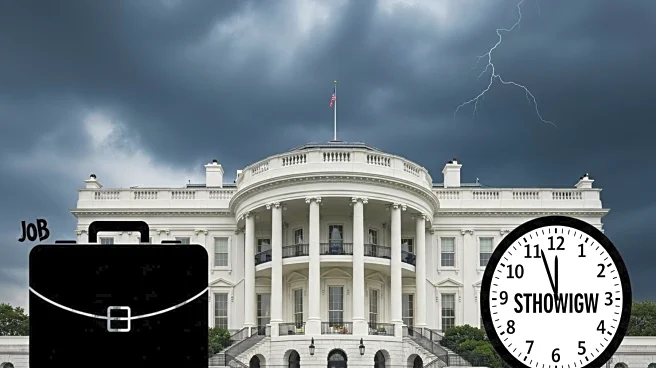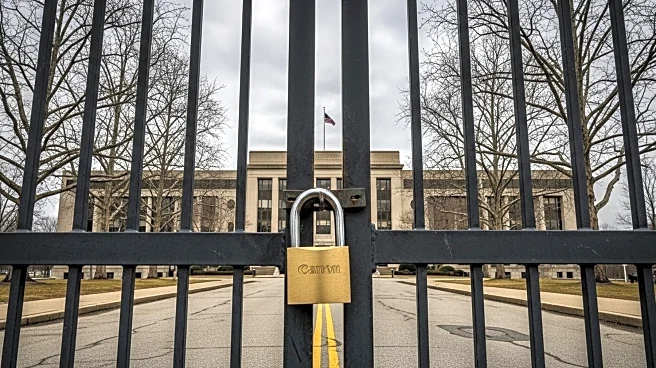What is the story about?
What's Happening?
The Trump administration has initiated significant layoffs of federal workers as part of a strategy to pressure Democrats during the ongoing government shutdown. The Office of Management and Budget reports that substantial layoffs are occurring across seven federal departments, including Treasury, Health and Human Services, and the Environmental Protection Agency. Over 4,000 employees are being terminated under 'reduction in force' procedures, with more dismissals possible if the budget impasse continues. The administration claims the layoffs are necessary to restore accountability and align federal programs with presidential priorities.
Why It's Important?
These layoffs represent one of the most extensive workforce purges in modern U.S. history, raising concerns about service disruptions and long-term staffing gaps in key agencies. The move could set a precedent for future administrations, potentially altering the landscape of federal employment and governance. Critics argue that the firings are politically motivated and unlawful, with labor unions planning to challenge the dismissals in court. The situation highlights the tension between political agendas and the operational needs of federal agencies.
What's Next?
The ongoing shutdown and workforce reductions may lead to legal battles over employment protections and due process for affected workers. Labor unions and civil service advocates are preparing to contest the dismissals, which could result in prolonged legal proceedings. The uncertainty surrounding retroactive pay for terminated employees adds another layer of complexity to the crisis, potentially influencing future negotiations and policy decisions.
Beyond the Headlines
The layoffs raise ethical questions about the use of workforce reductions as a political tool. They also highlight the challenges of balancing political priorities with the operational needs of government agencies. The long-term impact on federal employment and agency functionality could influence future policy debates and governance strategies.
AI Generated Content
Do you find this article useful?













